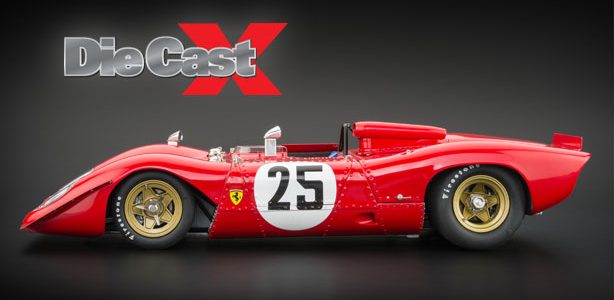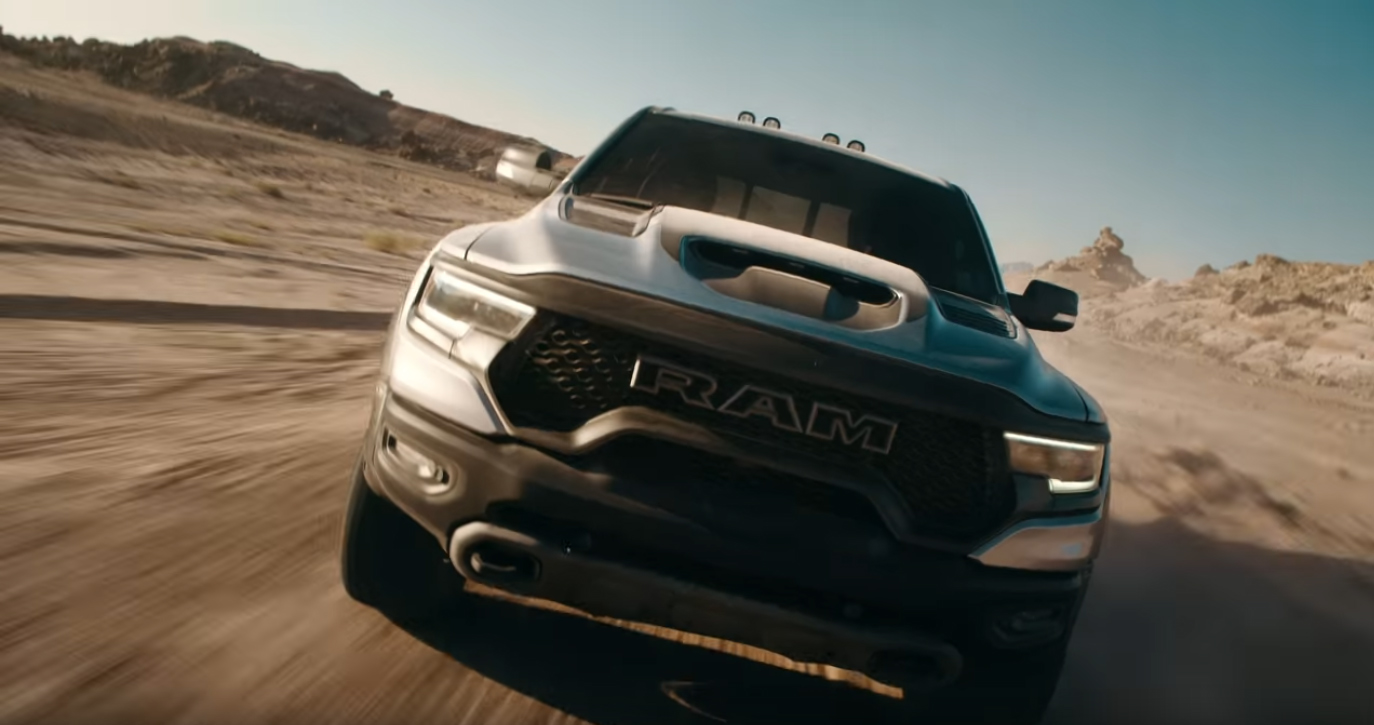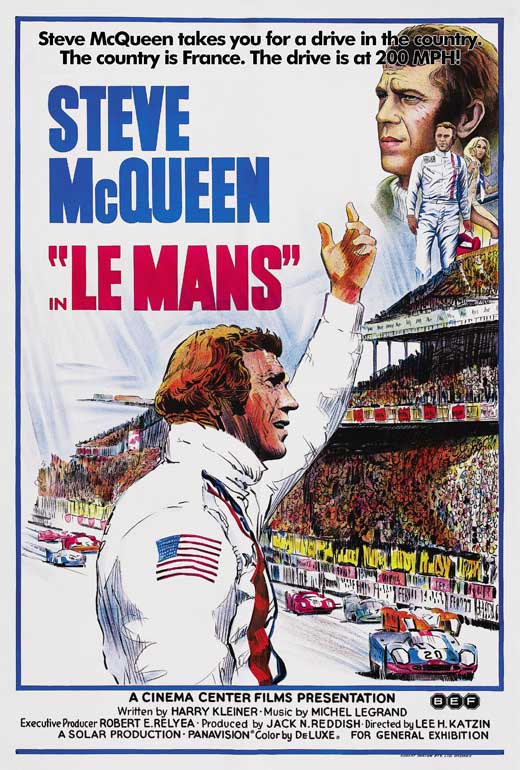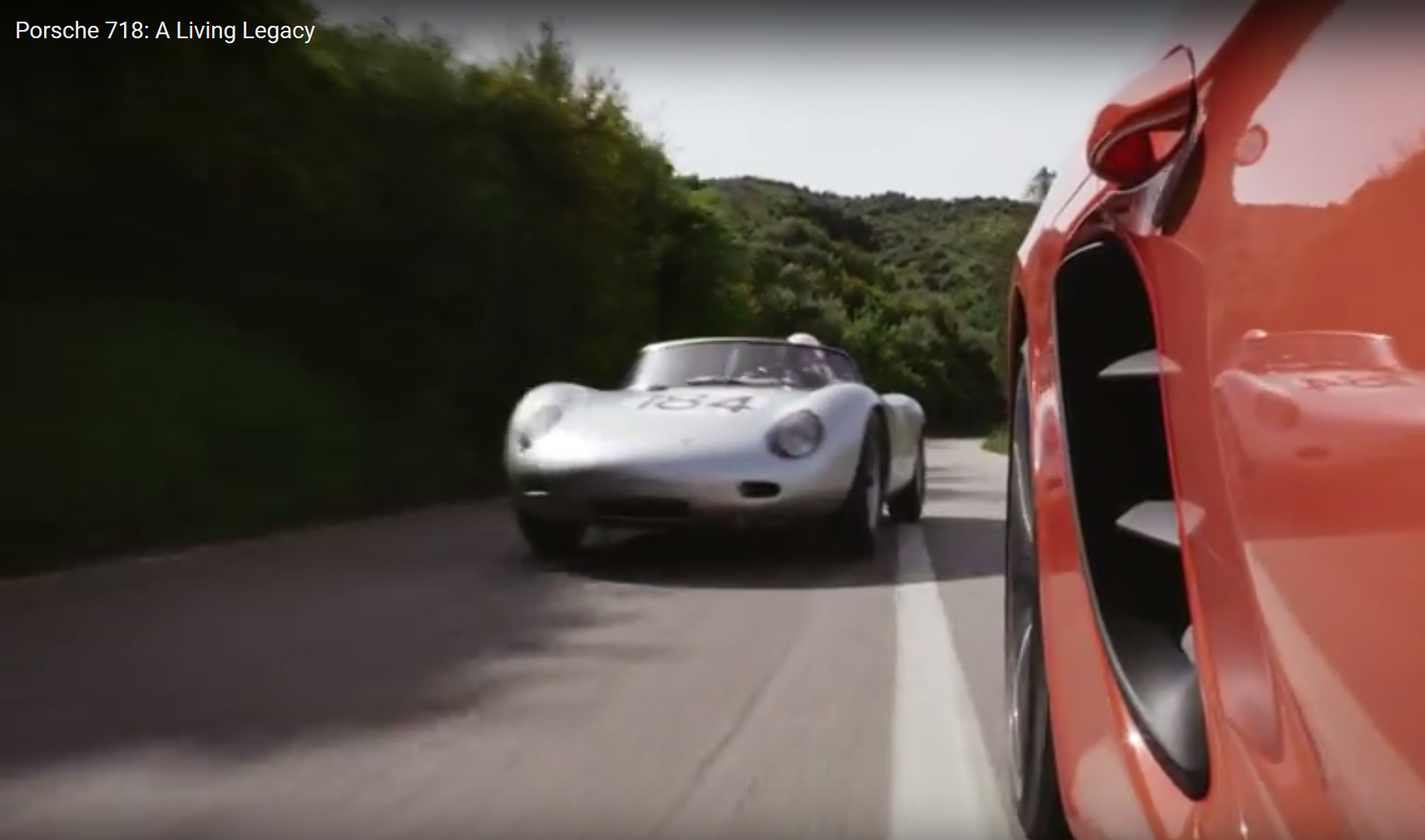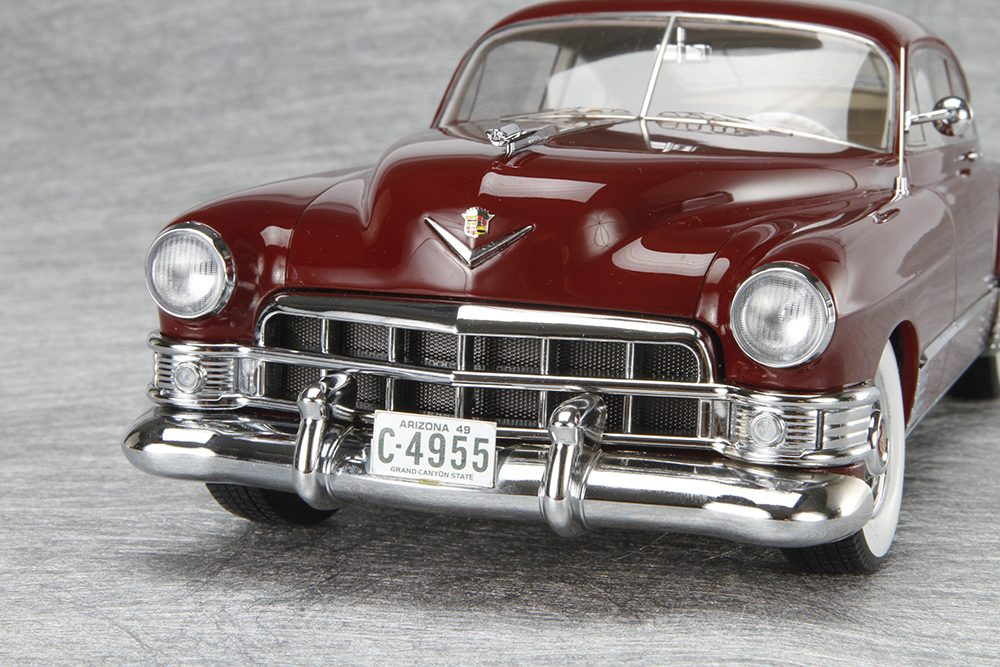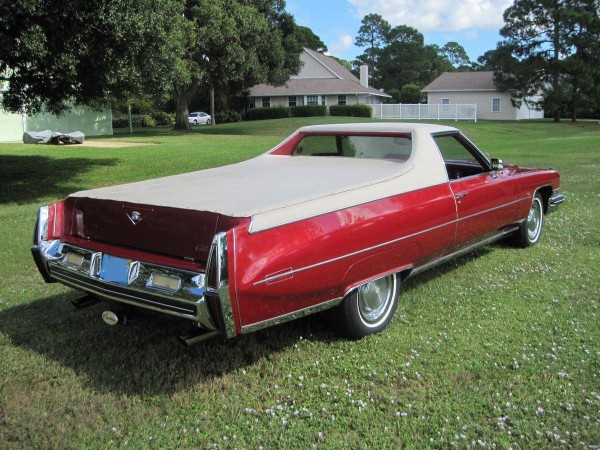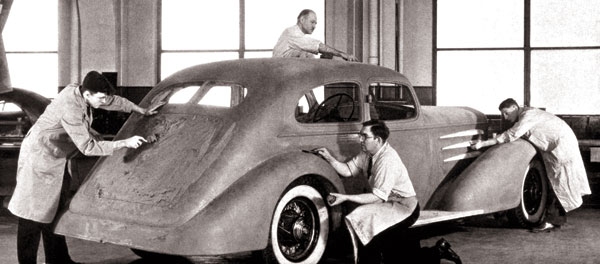 Truth be told, the 1933 Cadillac aerodynamic likely set the tone for what followed. Here Cadillac craftsmen refine the body of the prototype. |
As impressive as engine-performance advancements of the 1930s were, styling leaped forward further. In terms of pure artistry, the cars leading up to WW II became more stunning every year. The 1931 Auburn Speedster set the early standard with a sleek, pointed body and slightly raked windscreen. Pierce-Arrow advanced the aerodynamic look further with the 1933 Silver Arrow sedan. This was a breakthrough design, as this was one of the first automobiles designed without running boards. Although intended to be only an exercise in styling, five were sold at a cost of $7,500a staggering amount, considering that a Plymouth Coupe cost $775.
| Highs & Lows 1930 to 1941
Meek & strong Short & long Light & heavy Rich & poor Few & Many *The two Duesenberg SSJ roadsters were build for actors Gary Cooper and Clark Gable. |
The pinnacle of opulence and motoring technology were the fabulous Duesenbergs. A joint venture of E.L. Cord and Fred Duesenberg, production began in 1930. Powered by an exquisitely designed 420ci inline-8 cylinder engine, these road kings were capable of speeds in excess of 120 miles per hourdespite the fact that some weighed as much as 5,500 pounds. Coachwork for each of these magnificent creations was custom-built to the owners liking, so no two were exactly alike. Duesenbergs were filled with 1930s cutting-edge technology. Use of lightweight materials made these cars more nimble and driver-friendly than Cadillacs and Lincolns of comparable size. Along with the Cord L-29 as well as the Cord 810 and 812, these cars were (and still are) considered the most significant and important American luxury and performance cars of the eraif not automotive history. The Duesenberg was never intended to be a profitable venture for Cord. Its demise came hand-in-hand with the financial failings of Cord. By 1937, the final Duesenberg chassis was built. Just 470 models and 10 additional enginesone of which was installed into a land-speed contenderwere finished.
Cadillac did not concede the luxury market to Duesenberg and Cord. As early as 1933, the company had created the stunning 355C Sedan concept car. The vehicle was the focal point of Cadillacs display at the 1933 Worlds Fair in Chicago. The reaction to the handsome styling and plush interior overwhelmed company representatives. With only 130 horsepower, the car would have been woefully inferior to comparable models from Duesenberg and Mercedes-Benz. By 1934, the 355C had turned into the Aerodynamic coupe and Fleetwood sedan, now equipped with the fabulous 165hp V-16 engine. These engines were remarkably responsive with linear acceleration and packed massive torque. The styling of the V-16 Aerodynamic and Fleetwood models were the most advanced of all other Cadillacs and led to the debut of the 1938 Series 66the model most enthusiasts consider the ultimate Cadillac masterpiece.
By the time the first of the 3,703 Series 66s rolled out of the Cadillac assembly plant in 38, the company had ceased production of its V-12 engines. The new V-8 offered the same level of performance at a fraction of the production cost. The V-16 engine remained but was limited to the Series 90 of which only 508 were sold from 1938 to 41.



